Rabbits are good companions because of their docile personalities. They are also affectionate and sweet, longing for cuddling and petting. With our tips for new rabbit owners, your bunny can live longer and happier. Although bunnies are quiet most of the time, they need enough love and attention. Below are ten tips that every new rabbit owner needs to know!
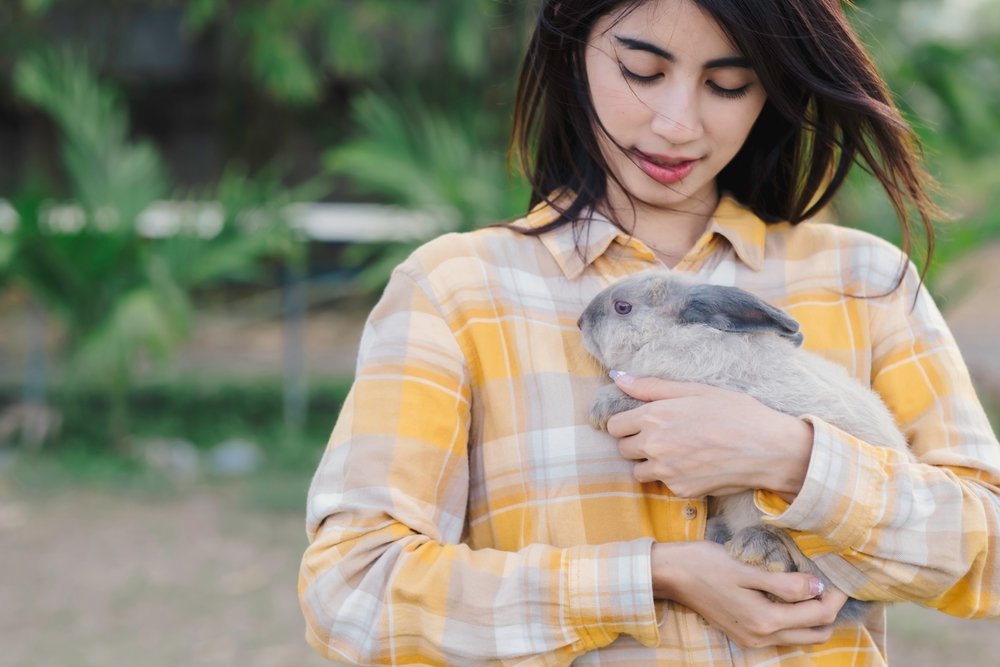
Choose the best rabbit breed
As a new rabbit owner, you must choose the bunnies that suit you best. Some rabbits are high maintenance because of the grooming, diet, and shelter they need. Angora breeds and giant bunnies are mostly not recommended for inexperienced owners. You can start with bunnies with short fur and small in size.
Our list of bunnies ideal for first-time owners includes Holland lops, Dutch, and Jersey Wooly. Aside from care needs, you must also evaluate the behavior and temperament of the bunny. As much as possible, choose a bunny you can get along with for a very long time. Some rabbit breeds crave attention, but others don’t demand much time from their owners.
You can choose an active breed if you love physical activities and exercise. Indeed, these bunnies can keep up with your energy. Most smaller rabbits are more playful and energetic than the bigger ones. Calm rabbits are available, like Mini Rex and Polish rabbits.
The average lifespan of rabbits is five to eight years. However, some bunnies live longer through proper care. Since you are looking for a companion, you must select a bunny that can accompany you for a long time. Examples of longest-living rabbits are Jersey Wooly, Mini Rex, and Netherland Dwarf. These furry pets can last for more than a decade.
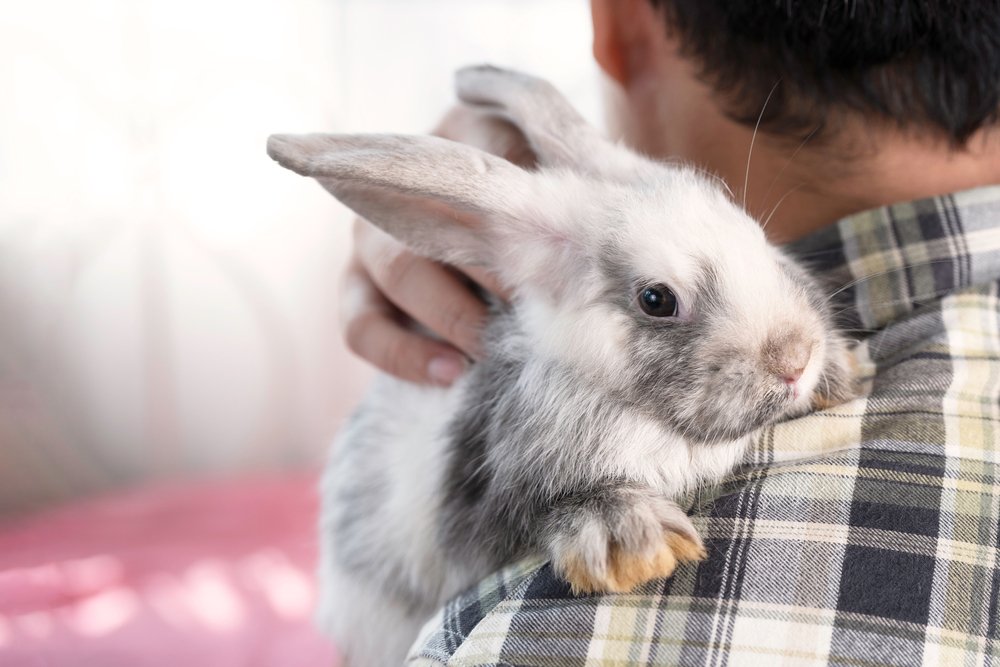
Regular grooming is essential to your bunny’s health
An essential of our tips for new rabbit owners, grooming might seem needless. But we encourage you to understand the importance to your rabbit.
Rabbits are naturally clean animals. A dirty bunny tends to be sickly than those that are well-groomed. Rabbits with long coats, untrimmed nails, and overgrown teeth suffer from health issues. Some of these are woolblock and malocclusion. To prevent this, brush your bunny’s fur regularly, trim its nails, and provide it with enough hay and chew toys.
In brushing the bunny’s coat, you need to use a soft brush. Rabbits have sensitive skins, so you must choose the proper brush. The best options include a flea comb and a plastic cat brush. Since some bunnies are sensitive to the combs, other owners use hair busters. Others prefer rubber grooming gloves to remove the loose fur during the molting.
Short-haired bunnies need at least twice a week of grooming. In contrast, long-haired bunnies need daily grooming. As a warning, never bathe your furry pet in water. It may experience stress, shock, and hypothermia. Instead of putting it into the water, you can use a damp cloth to spot clean the dirty areas.
You must also watch out for the growth of your pet’s nails. Rabbits with long nails are more prone to nail injuries and discomfort. Trim your bunny’s nails at least once a month. To prevent its nails from growing quickly, you can place scratching posts in its playing area. When trimming the rabbit’s nails, use rabbit nail clippers and get a partner to hold the bunny.
Besides its coat and nails, you must also prevent your bunny from overgrowing its teeth. It may lead to malocclusion, affecting your pet’s appetite and overall health. To avoid the overgrowth of its teeth, you must feed it with hay. Hay is effective in trimming the rabbit’s teeth. You can also provide chew toys and twigs for your pet to bite.
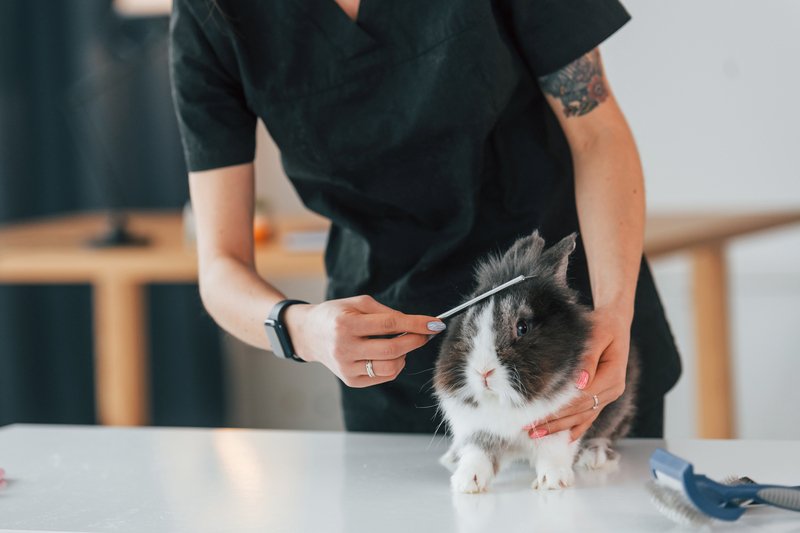
Proper diet is crucial due to rabbits’ sensitive guts
Although rabbits love munching, you should be very careful in feeding them. Unlike other animals, rabbits depend on their gut bacteria to digest food. If there is an imbalance in their gut bacteria, they will experience gut stasis and lack of appetite. The common cause of imbalance is because of the food they eat.
All bunnies should consume an unlimited amount of hay. It is a good source of fiber, aiding in digestion. Different kinds of hay are available, but you must choose the best for your pet. Most owners feed timothy hay to adult rabbits. But alfalfa hay is suitable for young bunnies. When giving fodder to your pet, ensure that they are fresh and free from pesticides.
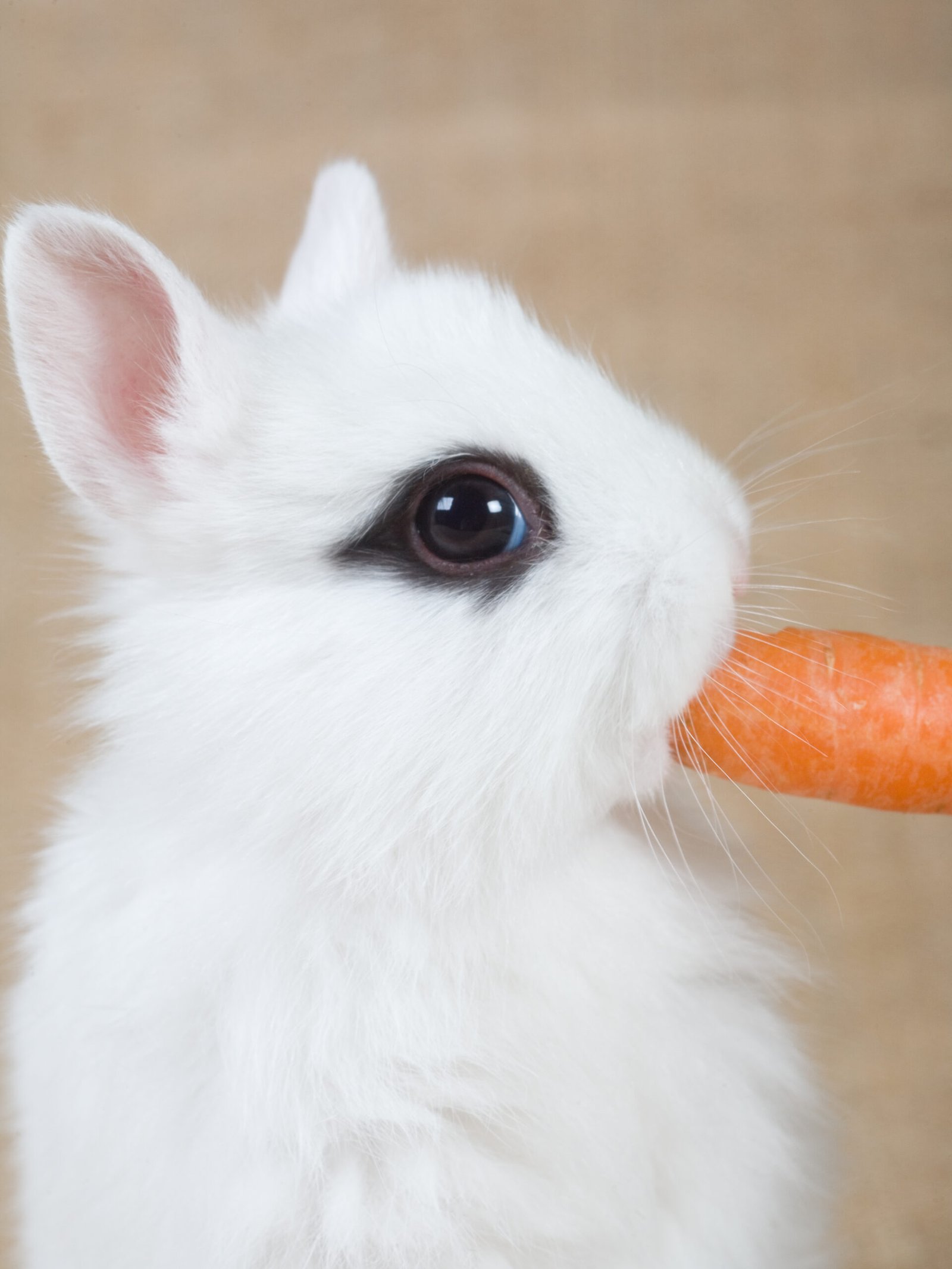
Fresh veggies
You should include leafy greens and fruits in your bunny’s diet. Leafy greens are good sources of vitamins and minerals. Aside from that, they are very rich in water, keeping your pet hydrated. You must provide at least three variations of vegetables daily. The ideal serving for a bunny is one cup of vegetables for every 4 lbs of body weight.
High-quality pellets are rich in fiber, vitamins, minerals, and protein. They provide the nutrients your bunny cannot get in hay and vegetables. But some rabbit owners prefer not to feed them to their pets. Excess pellets may cause obesity or other health issues. You must limit ¼ to ½ cups of pellets per six pounds of body weight daily.
Lastly, you can also include treats in your rabbit’s diet. However, you should give it in limited amounts only. You must feed at least one or two tablespoons of nuggets per day. Since fruits are very sweet, you can provide natural sweets to your pet, like a chunk of broccoli and carrots.

After reading these top tips for new rabbit owners, check out these articles on rabbit food:
Rabbit Food- What to Feed Your Rabbit
Never Feed Your Rabbit These Foods
Prepare a safe and suitable hutch for your bunny
Important tips for new rabbit owners, before bringing bunny home
Before getting a rabbit, decide whether you want it to stay inside or outside your house. An indoor rabbit can help you monitor its health and protect it against predators. If you want to let your bunny live with you, you must ensure it is in a safe environment. As natural chewers, make your home rabbit-proof.
You can also keep your bunny outdoors by providing a hutch. The size of the cage depends on how big your bunny is. A 24” by 36” enclosure is suitable for tiny bunnies, while a 30” by 36” is for large ones. Since bunnies don’t have paw pads like cats, they are prone to sore hocks. You should create a cage that has solid flooring.
To keep the bunny secure, you must put its cage in a safe. Place it under a tree or a shed to protect it from direct sunlight. You must also put it where loud noises cannot disturb your bunny. Since rabbits are prey animals, loud noises can easily frighten and stress them.
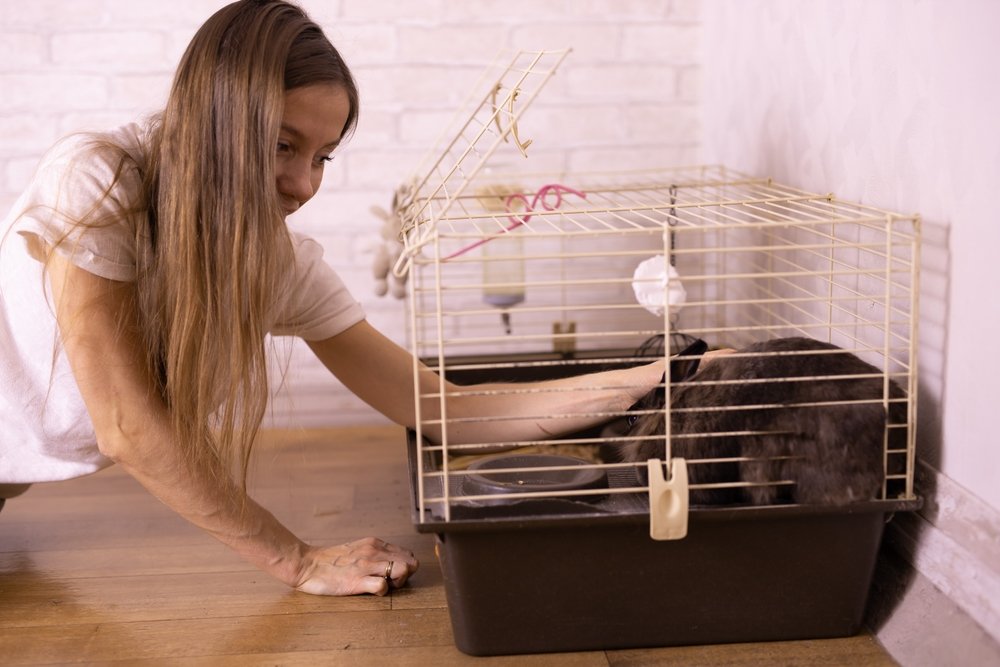
Some bunnies are prone to specific health issues
Health tips for new rabbit owners
You should research before getting a bunny. Some breeds have specific health issues. Dwarf bunnies are prone to dental disease due to their tiny heads and slightly longer jaws. On the other hand, giant rabbit breeds may suffer from sore hocks due to the greater pressure they exert.
Long-haired bunnies like Angora breeds are susceptible to woolblock and fur mites. Without proper grooming, they may ingest their fur or be infested by parasites. Furthermore, lop-eared rabbits are vulnerable to ear mites. Because of their long ears, parasites can quickly enter their ears and lay eggs.
Some diseases are common to all bunnies. Examples of these are gastrointestinal stasis, flystrike, and respiratory infections. To keep your bunny healthy, you must bring it to the vet for a regular check-up. You can also add supplements to keep your rabbit healthy, but ensure that the vet prescribes them.

Spaying or neutering is beneficial to the bunny’s overall health
You should spay or neuter if you don’t plan to breed your bunny. Spaying is a surgical procedure wherein the ovaries and uterine horns are removed. Its purpose is to make the female rabbit infertile. On the other hand, neutering is the procedure of removing the testicles of a male rabbit.
Spaying prevents unwanted pregnancies and the risk of uterine and ovarian cancer. Aside from that, it also prevents the bunny from showing behaviors caused by hormones. Spayed rabbits are also easier to train on how to use the litter box, and they are also calmer.
Bucks that are neutered are less prone to testicular and prostrated cancers. They are also less aggressive and territorial. These bunnies are also better in companionship and show better temper. You can quickly train them, especially in using their litter boxes.
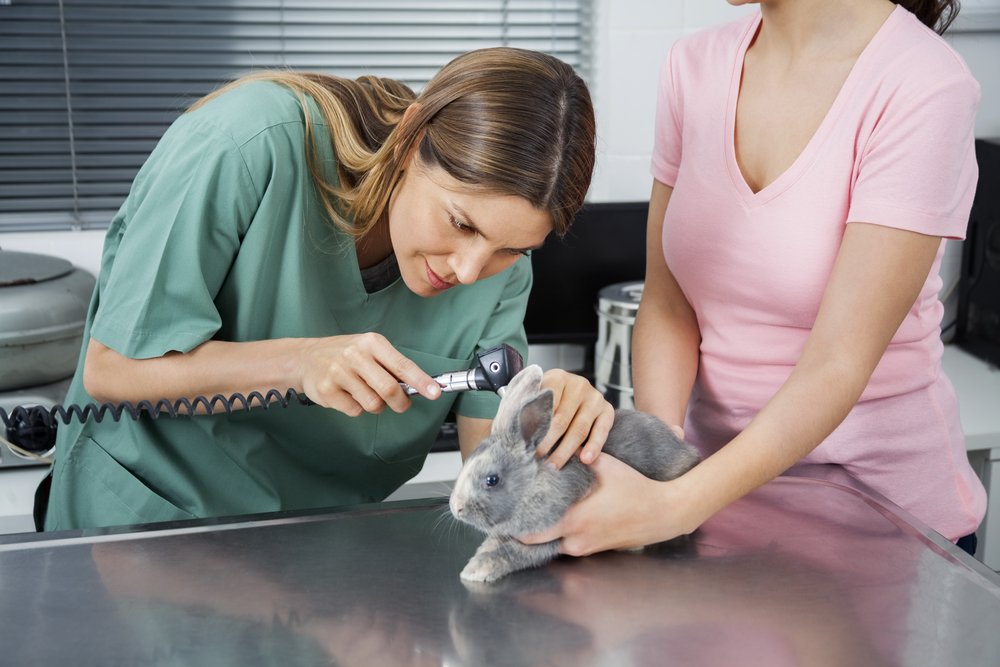
You can train your rabbit to use its litter box
Clean-up is easier with these tips for new rabbit owners
Rabbits are intelligent pets, so training them to use litter boxes is possible. However, there are rabbit breeds that are smarter than others. But overall, you must have time, commitment, and patience so they can learn. Litter training is beneficial for you and your pet. It keeps your house clean and makes it easier for you to monitor your bunny’s health.
Before you train your pet, you must have the proper litter and litter box. Aside from that, you must employ the correct procedures. Your bunny cannot get it for the first time, but as you keep teaching your pet, it will learn how to use its litter box.
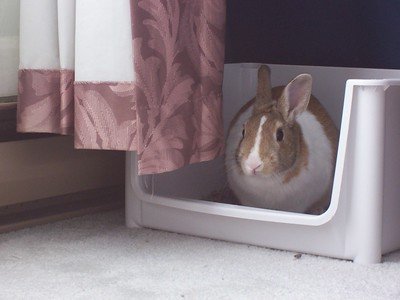
A rabbit-proof room ensures the safety of your pet
To keep your bunny indoors, you must make your house rabbit-proof. Bunnies love to chew since it is part of their instinct. Thus, you must hide the visible cables and wires in your home. They may also gnaw at your wooden furniture, so rearranging it is very important.
Creating a safe environment for your pet can protect it from harmful elements. Some of these are hazardous chemicals and household plants. It will also give your bunny space to roam freely without damaging your property.

Exercises keep rabbits to be physically fit and mentally stimulated
A bunny without proper exercise can be sickly and overweight. It may also get bored, resulting in stress and other health issues. An average bunny requires at least three hours a day of exercise outdoors. However, active rabbit breeds need more time outside to keep them healthy and happy.
You can place exercise equipment, buckets, and boxes of hay inside your bunny’s hutch so it can play inside its cage. You may also put some rabbit tunnels and a ramp where it can hide and hop. When outdoors, expect your pet to jump, forage, and explore. It may also jump and gnaw as forms of exercise.
As much as possible, ensure that your bunny has a safe place to exercise. Since bunnies are high jumpers, you must have a tall fence in your backyard. Also, it must be safe from predators like dogs and foxes. Bunnies also need supervision when they are exercising. It is also one of the ways you can bond with your pet.
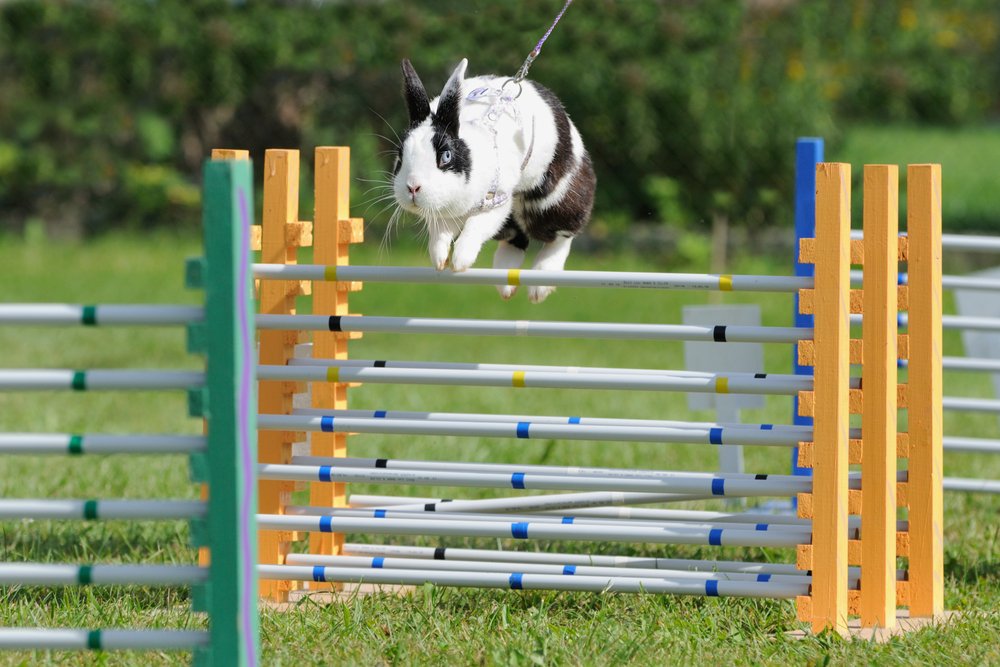
Our pet rabbits need companions to thrive
Rabbits are very social and friendly, so they need companions to thrive. If your pet is friendly, you must get at least one or more rabbit companions. But you must be careful when placing new rabbits since they may become aggressive. Give them time to adapt to one another before you put them in one hutch.
Some rabbits may get frustrated if you fail to give them the attention they need. All pets need their owners’ time and attention once in a while. As you love them more, they also become better companions to you. Never leave your bunny alone for a very long time. If you have to go for an extended period, have someone to take care of it.
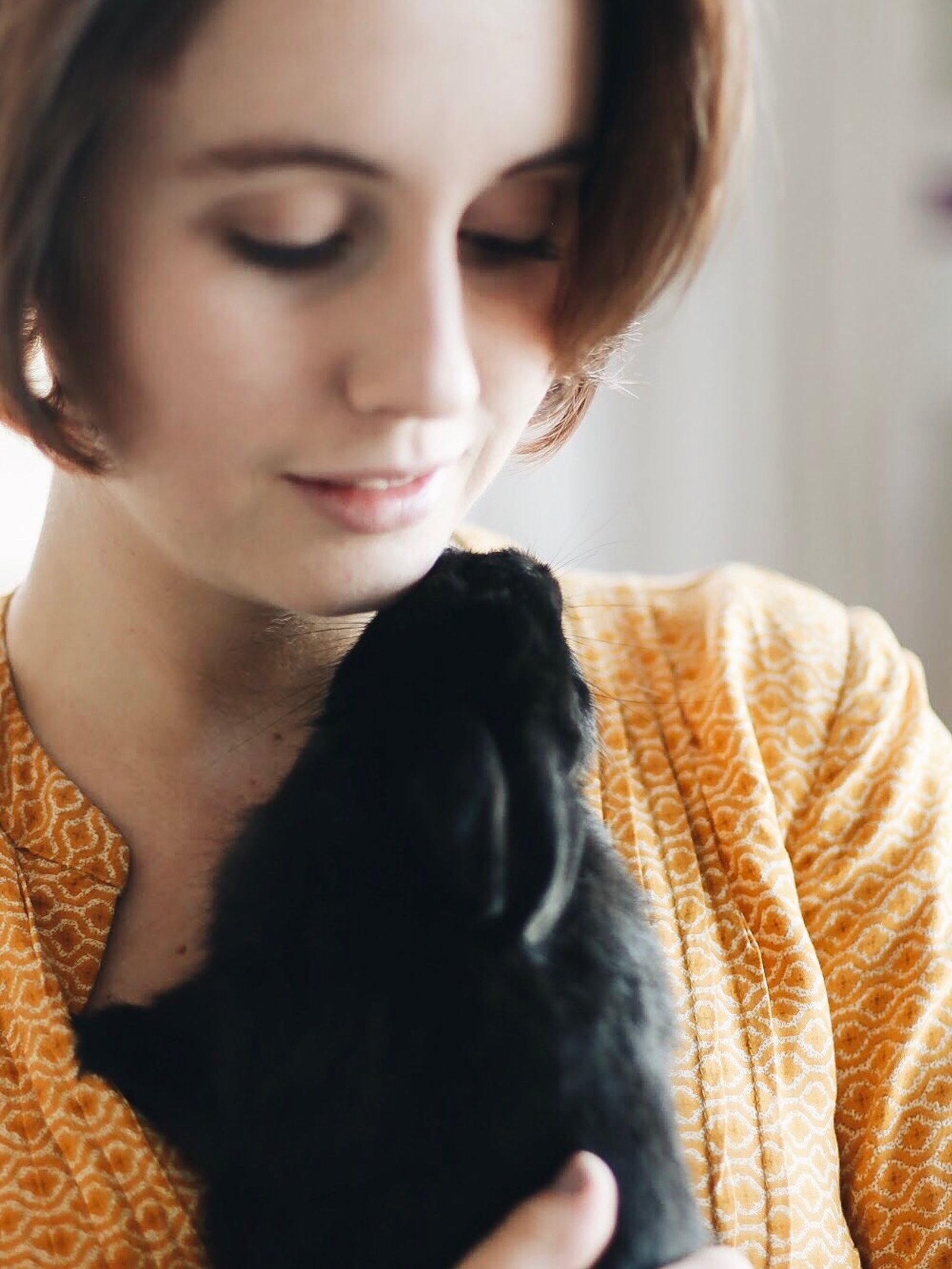
Use these tips for new rabbit owners, as you prepare
Rabbits are one of the best pets you can have because of their calm and friendly personality. But as a new rabbit owner, you must do some research to give the best care for your pet. Bunnies that have responsible and loving owners tend to live longer. These lovely creatures are affectionate once you gain their trust.
Lastly, Check out this article regarding whether you should give a Pet Rabbit as a Gift for Christmas.

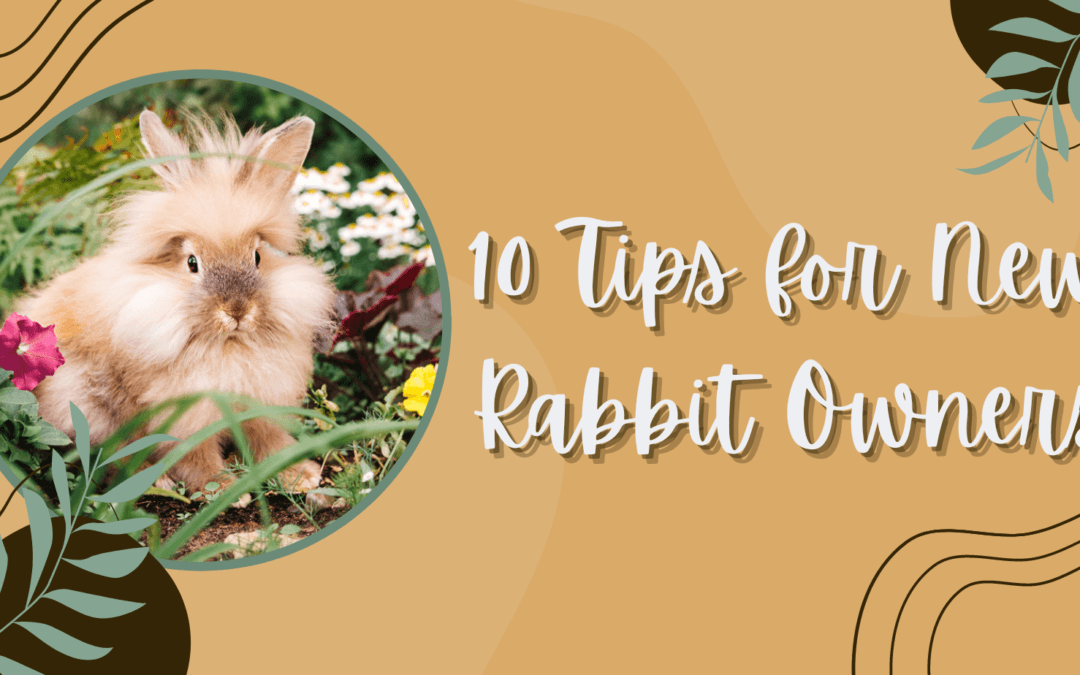


As a potential new rabbit owner I would like to ask a few general questions about living habitats including how much space should I allow for a single rabbit. Understanding it will depend on the bread but an estimate would be helpful. Also, any thoughts on how to prevent wild animals and bird from getting at a new rabbit? We have a lot of hawks and the occasional eagle to contend with. Your guidance is much appreciated. Thanks. Dave
Good questions! First, we always suggest as much space as possible. As a guideline, the pen should be at least 4 sq ft for a small rabbit (dwarf) and much larger as the size of the rabbit increases. The giant breeds need a much larger cage, usually at least 12 sq ft. But in any case, larger is better. And of course, they need more room to exercise outside of their cage. We suggest an exercise yard (fenced, of course) indoors or out.
As for the wild predators, they are a problem. Most pet rabbits live indoors, away from those hazards. If yours must stay outdoors, make sure the pen is very secure. Some use a double enclosure to ensure that the rabbit cannot be grabbled through the normal cage wire. So this would be a cage within a larger pen, perhaps a chainlink style dog run with a top Watch for those animals that dig under, too.
We have upcoming articles about these and other concerns- check back with us soon!
Your information about having healthy bunnies caught my eye as I had a yen to get a couple for the great-grandkids. However, I think that I would be contributing unintended work to their moms. There is more to a successful bunny home than I realized.
Our most recent rabbit journey was for grandkids and 4-H. That was not a 4 year or so project.
Thanks for giving me a heads-up on what’s actually involved. Maybe as the kids get older. You have done a great service to future bunnies and Grandmothers acting on impulse, not wisdom.
Sami
Yes, many choose bunnies as a child’s pet, without thinking about the daily care and long-range needs. But they do make great pets, if parents are able and willing to help.
Where I see a lot of bunny owners fail is in regular grooming. Many folks neglect this lovely animals. They fail to groom them regularly. Rabbits are unlike goats and sheep. They fall into the class of dogs and kittens. The regular upkeep of these animals makes them lovely and easier to manage. What I treasure most is the bond it creates between us and them
Your words are quite true! These little bundles of fur are quite like our pet dogs and deserve to be given the best life possible
Such a fascinating and unique post. I find it very interesting as well as unusual for me. I don’t have any experience with rabbits, and I don’t mind having one. I am sure it is very challenging to have a rabbit but I am willing to learn how to raise one. Thanks for sharing this information.
Thanks for your comments. Rabbits are quite interesting and not too challenging as a pet.